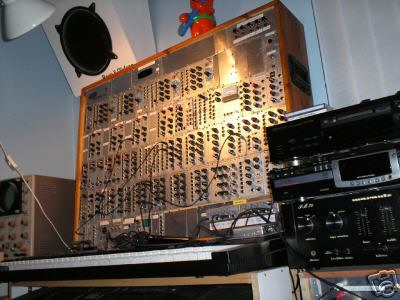
Unfortunately no embedding on these so you'll have to watch them on YouTube:
Oskar Sala spielt auf seinem Mixtur-Trautonium
Oskar Sala - Mixtur-Trautonium - Klang und Verwendung
Oskar Sala - Portrait 1993
These in via rustyanalog. See the Trautonium and Oskar Sala labels at the bottom of this post for more.


Update via elgauchoandres in the comments:
"love all those old videos from the Trautonist Youtube channel
featuring Oskar Sala.
I think the oldest video on Youtube featuring Oskar Sala is:"
Electrische piano: Trautonium (1941)
YouTube via BeeldenGeluid | Oct 16, 2010 |
"In Den Haag wordt door Oskar Sala een demonstratie gegeven van de klanken van een nieuw elektronisch muziekinstrument, de Trautonium. De speeltafel van dit instrument is vergelijkbaar met die van een pijporgel. Het heeft twee 'manualen' die met de vingers worden bespeeld. De normale configuratie van zwarte en witte toetsen ontbreekt echter. De Duitser Zaun geeft een toelichting. Sala speelt op het instrument een stukje muziek en wordt daarbij begeleid door een pianist.
Deze video of jouw TV-favoriet op DVD bestellen?
Ga naar: http://www.beeldengeluid.nl/tvfavoriet"
Googlish:
"In The Hague by Oskar Sala, a demonstration of the sounds of a new electronic musical instrument, Trautonium. The console of this instrument is similar to that of a pipe organ. It has two 'manuals' that the fingers are played. The normal configuration of black and white keys missing. The German Zaun explains. Sala plays the instrument a piece of music and is being accompanied by a pianist.
This video or your favorite TV on DVD order?
Jump to: http://www.beeldengeluid.nl/tvfavoriet"


























































